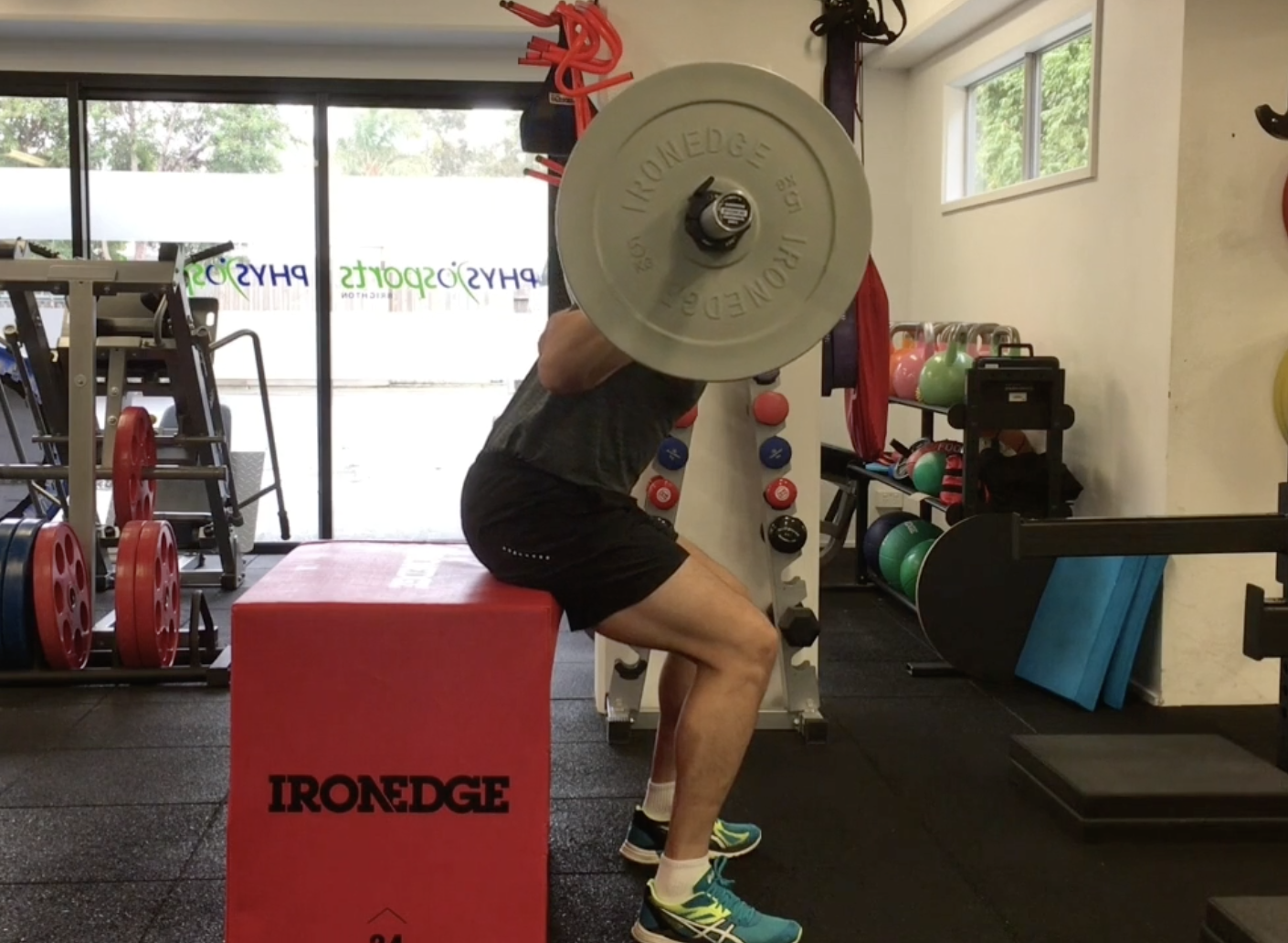Visit
Physiosports Brighton,
429 Nepean Highway, Brighton East,
3187, VIC, Australia
Call
Fax
03 9596 9155
physiosports@physiosports.com.au

By John Contreras
Squats can be one of the most frustrating exercises for both clinician and patient to take on. Despite the squat having a strong evidence base supporting its use across a range of musculoskeletal conditions, it is an exercise requiring complex coordination across several joints. As a result, learning efficient form can be a frustrating experience for both patient and clinician
Without going into the debate of whether squats should be coached with a hip or knee bias (they both have a place in rehabilitation and performance training), one body region that we as Physiotherapists spend a lot of time addressing is the lumbar spine posture. This is particularly so when progressing a patient through their back rehabilitation. One way to ease the coaching process is by coaching the squat from a seated position and simply focus on postural control at the bottom of the squat
Two simple drills I coach patients through to facilitate lumbo-pelvic-hip postural awareness are Loaded Seated Hip Hinge and Loaded Seated Pelvic Tilts. I should note, that I start with unloaded versions of the two movements and then progress towards these low load versions.
Ultimately the aim is to progress to free standing squats, however as a coaching tool these drills can be very helpful in building both awareness and confidence in patients.
Key Coaching Points:
Loaded Seated Pelvic Tilts:
Loaded Seated Hip Hinge:
John is running a Strength and Conditioning Essentials course this November 2018. For more information, click here or email info@physiosports.com.au.